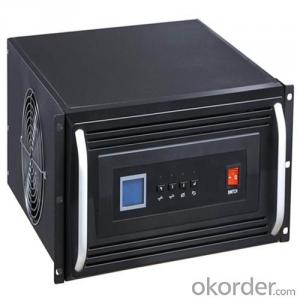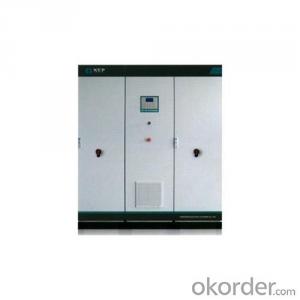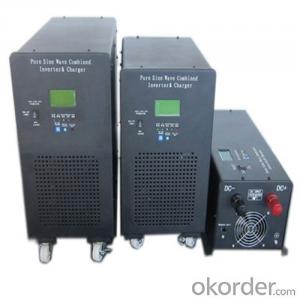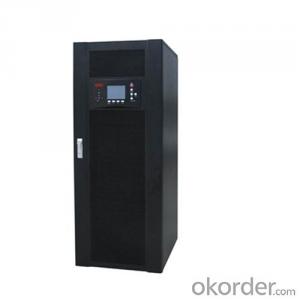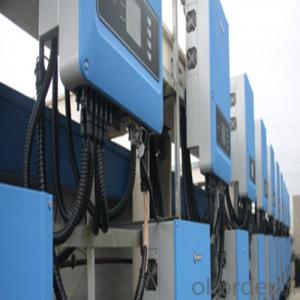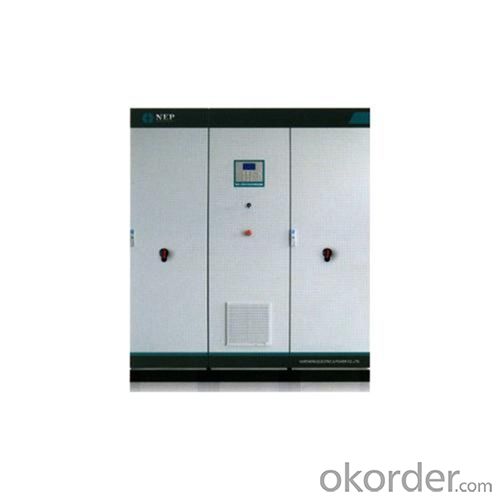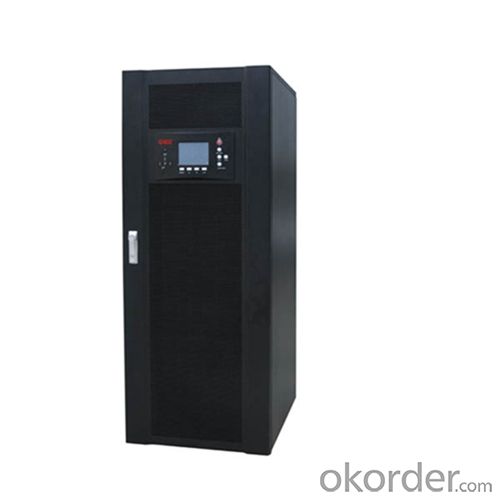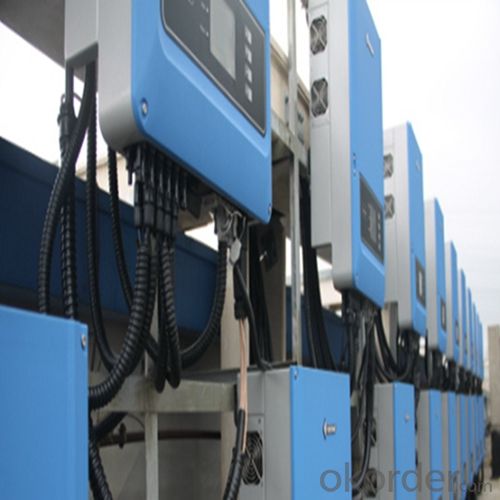Solar Inverter Rv Approved 3000W 24V Pure Sine Wave
- Loading Port:
- Shanghai
- Payment Terms:
- TT OR LC
- Min Order Qty:
- 2 pc
- Supply Capability:
- 3000 pc/month
OKorder Service Pledge
OKorder Financial Service
You Might Also Like
Performance Characteristics
· 1. Suitable for all electrical equipments
· 2. Large LCD display for more detailed content
· 3. CPU controlled; fast transfer time
· 4. Intelligent battery management, prolonging the service life of the battery
· 5. Complete protection function, high reliability
· 6. Can provide high current charge
· 7. Can match different types of batteries
· 8. Disassembled LCD box which can make the operation in a distance of 15 meters
Product introduction
EP series is sine wave low frequency inverter, which is specifically designed for home appliances. It is equipped with a big LCD screen so all information is displayed in detail, which makes it more convenient to use. Charging current of the inverter is adjustable from 5A to 45A and you can also select different charging voltage to charge different types of batteries so batteries are under great protection.
Our Service
Samples
Samples are Available for Testing and Market Test.
Warranty
We provides warranty against defects in materials and workmanship for its Uninterruptible power supply, Power inverter/chargers including inverter12v 24v 48V, Solar charge controllers (“Product”).
OEM Service
OEM service is strictly based on the ISO9001 ISO14001 quality assurance system. The TOP involves the effective teamwork of departments from Sales, R&D, and Engineering, purchasing, production & QA, assuring a high quality product and prompt delivery for customers. The standardization of our quality system and the quality stability has earned us the trust of our customers for 12 years.
We have 10 sets of automatic insertion equipments, ICT PCB testing equipments, ATE automatic testing center and aging workshop for all products. Monthly output of UPS series exceeds 200,000. We have been offering OEM service for over 12 years.
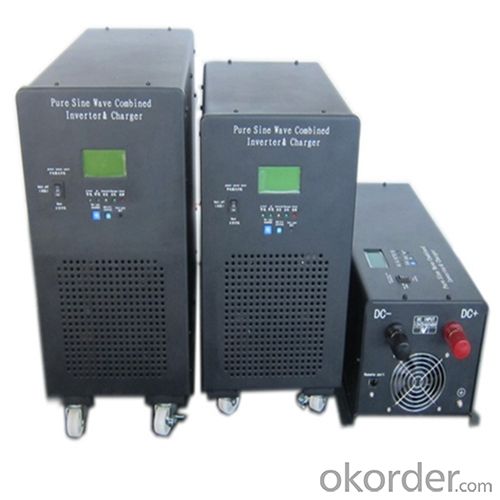
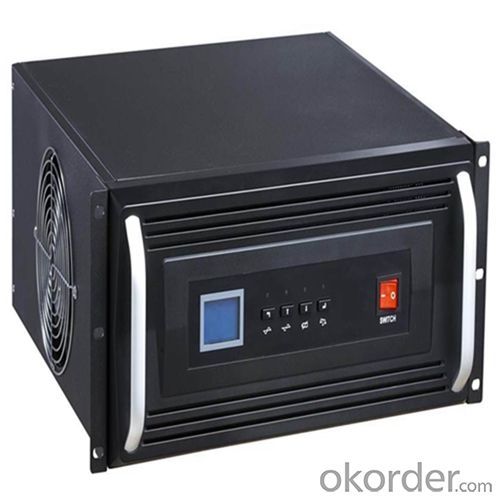
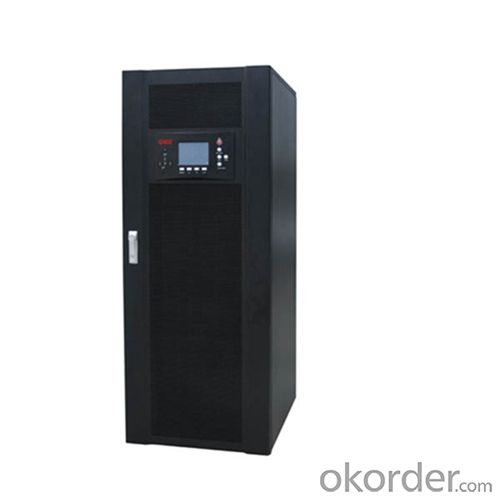

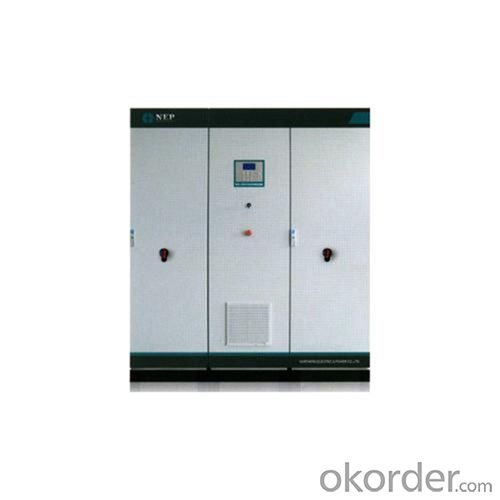
Specifications
Input | |
Input Voltage Range | 182-265VAC |
Output | |
Input Voltage Range | Batt.Mode:50±0.3Hz Mode:48-54Hz(50Hz) or 58-64Hz,Same as AC |
Output Wave Form | Sine Wave (Batt,mode) |
Transfer Time | 10ms(Typical) |
FAQ:
Q: Do you have the CE, TUV, UL Certification?
A: We’ve already passed all the tests, and any certificate is available.
Q: Have you ever sold your products to companies in my country?
A: Of course, we have customers in all general PV markets, but I think we should expand our market share along with the market growth.
Q: When did your company set up? You are a new company, how can I believe your quality?
A: We entered into Solar PV industry in 2005, now we have several plants in manufacturing of a-Si and c-Si panels, and our capacity is 220MW per year. Till now we have already passed all the tests by authorized laboratories, e.g. TUV, CE, UL.
Q: Can you help us install the module if we cooperate with you?
A: We haven’t entered into installation sector, but we have the plan in near future.
Q: How do you pack your products?
A: We have rich experience on how to pack the panels to make sure the safety on shipment when it arrives at the destination.
Q: Can you do OEM for us?
A: Yes, we can.
Q: Can we visit your factory?
A: Surely, I will arrange the trip basing on your business schedule.
- Q: How do you calculate the efficiency loss due to temperature for a solar inverter?
- To calculate the efficiency loss due to temperature for a solar inverter, you would typically refer to the manufacturer's specifications and documentation. The efficiency loss can be determined by comparing the inverter's rated efficiency at a specific temperature (usually 25 degrees Celsius) to its efficiency at the desired operating temperature. The manufacturer may provide a temperature coefficient, which represents the percentage decrease in efficiency for every degree increase in temperature. By multiplying the temperature coefficient with the difference between the desired operating temperature and the reference temperature, you can estimate the efficiency loss due to temperature.
- Q: How does a solar inverter handle overloading?
- A solar inverter handles overloading by constantly monitoring the power output from the solar panels and the load demand. If the load demand exceeds the maximum capacity of the inverter, it will automatically reduce the power output or shut down to prevent any damage or overheating. This ensures the safety and optimal performance of the inverter and the connected devices.
- Q: Can a solar inverter be used in areas with high humidity and salt air exposure?
- Yes, a solar inverter can be used in areas with high humidity and salt air exposure. However, it is important to choose a solar inverter that is specifically designed for such conditions. High humidity can potentially cause corrosion and damage to electronic components, while salt air exposure can lead to accelerated corrosion due to the corrosive nature of salt. Therefore, it is crucial to select an inverter that is made with materials resistant to corrosion, such as stainless steel or coated circuit boards. Additionally, regular maintenance and cleaning of the inverter should be performed to ensure optimal performance and longevity in such environments.
- Q: Can a solar inverter be used with a remote monitoring system?
- Yes, a solar inverter can be used with a remote monitoring system. In fact, many modern solar inverters are designed to be compatible with remote monitoring systems. This allows users to monitor the performance and output of their solar system from a remote location, providing real-time data on energy production, system efficiency, and any potential issues or faults. Remote monitoring systems provide convenience, enable proactive maintenance, and help optimize the overall performance of solar installations.
- Q: Can a solar inverter be used in areas with high temperature fluctuations?
- Yes, a solar inverter can generally be used in areas with high temperature fluctuations. Solar inverters are designed to operate in a wide range of temperature conditions, typically between -20°C to 50°C (-4°F to 122°F), depending on the specific model. They are built with temperature protection mechanisms to ensure their functionality and durability even in extreme temperature variations. However, it is important to note that prolonged exposure to extreme temperatures at the upper or lower limits of their operating range can affect the performance and lifespan of the inverter. Therefore, proper installation and regular maintenance are crucial to ensure optimal performance in areas with high temperature fluctuations.
- Q: How does a solar inverter handle voltage unbalance in the grid?
- A solar inverter handles voltage unbalance in the grid by employing its control algorithms to monitor and regulate the output voltage. When the solar inverter detects an unbalanced grid voltage, it adjusts the output voltage accordingly to maintain a balanced supply. This is typically achieved by injecting reactive power or adjusting the phase angle of the output voltage to synchronize it with the grid. By actively managing voltage unbalance, a solar inverter ensures stable and reliable power conversion in the presence of grid voltage fluctuations.
- Q: Can a solar inverter be used with a solar-powered outdoor lighting system?
- Yes, a solar inverter can be used with a solar-powered outdoor lighting system. A solar inverter is responsible for converting the direct current (DC) generated by solar panels into alternating current (AC) that can be used to power various devices, including outdoor lighting systems. By connecting the solar panels to a solar inverter, the generated energy can be efficiently transformed and utilized for powering the lighting system, ensuring sustainable and renewable lighting solutions.
- Q: Do I need a special inverter for a battery storage system?
- Yes, a special inverter is required for a battery storage system. Unlike traditional grid-tied solar systems, a battery storage system needs an inverter that is capable of converting the direct current (DC) power produced by the batteries into alternating current (AC) power that can be used to power household appliances or fed back into the electrical grid.
- Q: What is the role of a solar inverter in a net metering system?
- The role of a solar inverter in a net metering system is to convert the direct current (DC) electricity generated by the solar panels into alternating current (AC) electricity, which is compatible with the electrical grid. The inverter also synchronizes the solar system with the grid, ensuring that excess electricity generated by the solar panels is fed back into the grid, allowing for net metering and the possibility of earning credits for the surplus energy generated.
- Q: Can a solar inverter be used in areas with unstable grid connections?
- Yes, a solar inverter can be used in areas with unstable grid connections. Solar inverters are designed to handle fluctuations and interruptions in the grid power supply. They typically have built-in features such as anti-islanding protection and grid support functionalities that ensure safe operation even in areas with unreliable grid connections. These inverters can switch seamlessly between grid power and solar power, providing a consistent power supply to the connected loads in such areas.
Send your message to us
Solar Inverter Rv Approved 3000W 24V Pure Sine Wave
- Loading Port:
- Shanghai
- Payment Terms:
- TT OR LC
- Min Order Qty:
- 2 pc
- Supply Capability:
- 3000 pc/month
OKorder Service Pledge
OKorder Financial Service
Similar products
Hot products
Hot Searches
Related keywords
